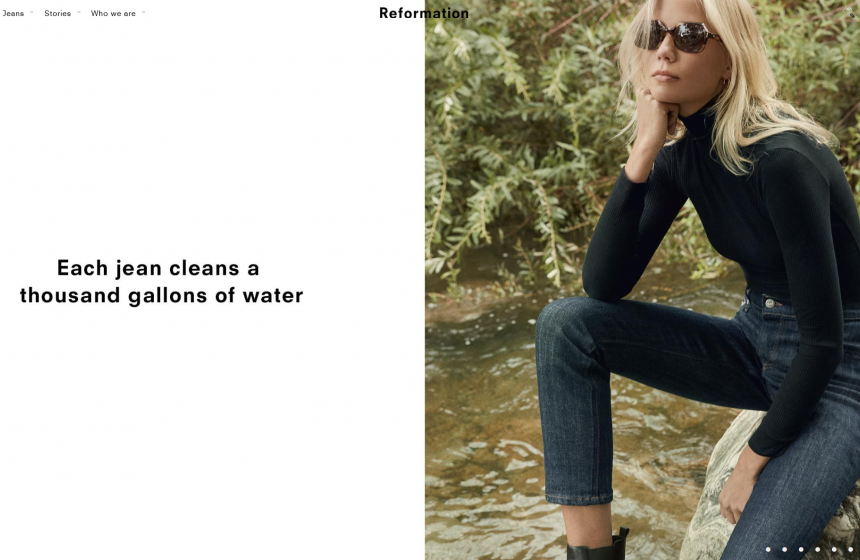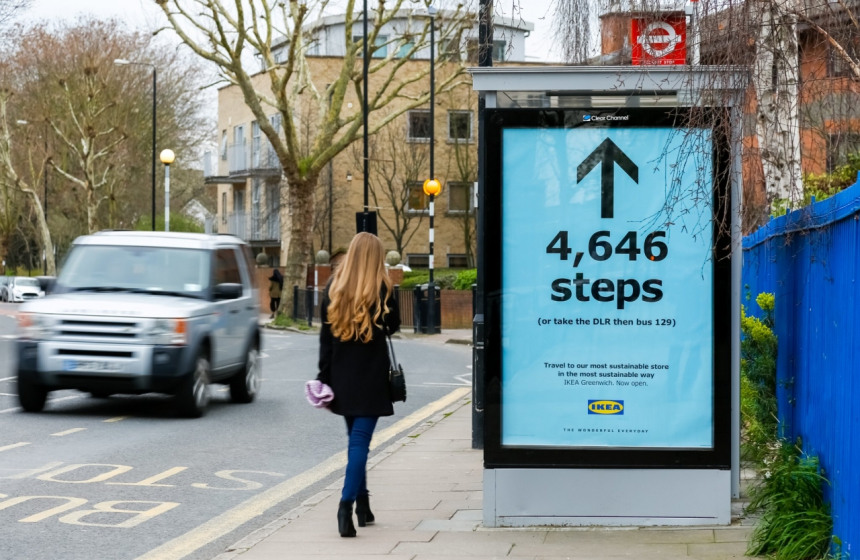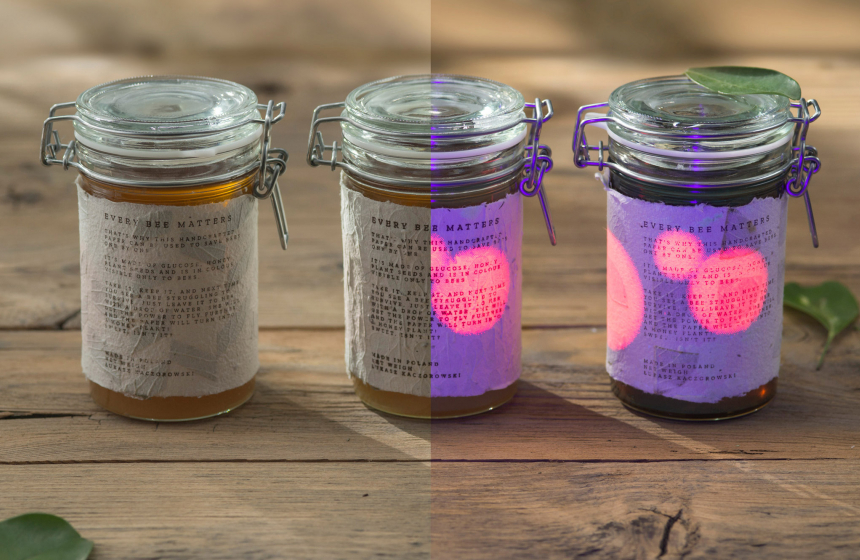
International Booker Prize and Maison Valentino celebrate the world’s best storytellers
The cultural partnership aims to champion excellence in inclusivity in art and storytelling

Consumers are done with talking, with words and empty promises, with hard to imagine numbers and overwhelming quantities. What they want is proof and evidence of brands making a change, and a means for them to do the same.

For 11 days last month, Extinction Rebellion activists protested around London. The group, which launched in October 2018, has three aims: to get the government to tell the truth on climate change, to bring greenhouse net emissions to zero by 2025, and to create a citizen’s assembly on ecological and climate justice.
This week, they again got the country’s, and politicians’ attention, by positioning climate change at the top of the political agenda. The Scottish First Minister Nicola Sturgeon and the Welsh government both declared climate emergencies. Whilst Labour leader Jeremy Corbyn said his party plans to force a vote on declaring a national environmental and climate change emergency in parliament this week after discovering that the UK government has only spent a fraction of the money set aside for clean air initiatives. As Greta Thunberg said when she addressed parliament in April, “We cannot solve an emergency without treating it like an emergency.”
The 16-year-old Swedish climate activist nominated for the Nobel Peace Prize, Thunberg has become the spokesperson for her generation after leading international school walk-outs in protest about the climate crisis. This is the generation who won’t just take businesses at their word, but instead push for change until they see it happening. A generation that are going vegan, shopping second-hand and who won’t compromise on brand ethics.
But are brands actually making the change their consumers want to see? Or are they simply using the conversation as a marketing opportunity? Where once it was OK to tell consumers what you were doing, that’s no longer enough. You need to show them. As Kevin Chesters, Strategy Partner at Harbour, has said, “it is always better to be a problem-solver than a problem-spotter.”
The reality is that we all need to buy less stuff and so ‘going green’ becomes a balancing act between ethics, profit and consumption a lot of the time, especially for brands. Patagonia has long been heralded as a genuinely brilliant example of the show don’t tell model. At the end of 2018, the founder Yvon Chouinard announced that their mission statement has become more urgent, direct and clear: “Patagonia is in business to save our home planet.” Chouinard believes what’s important is to recognise and address the crisis the climate is facing rather than the change that’s happening.
As with much that happens within the marketing landscape, it’s always easy to be cynical about the declarations of change being made; to assume brands are simply paying lip service to pacify their consumers. Especially in recent months, when there seems to be no end to brands pledging their support or offering up their green credentials.
But who are those actively doing something to help? Is it all talk or are there brands alongside their agency partners that are turning that talk into action? As an Extinction Rebellion poster read last week, “Business as usual costs the earth.” Below are some of the brands forgoing the usual to work towards a greener, cleaner world.

Reformation, 'Each jean cleans a thousand gallons of water'
To be frank for a moment, look at what you’re wearing right now. Do you know who made your clothes? Have you ever thought to ask? In memory of the Rana Plaza disaster that killed over 1,000 people in 2013, #WhoMadeMyClothes has been circulating on Instagram. It invites consumers to question brands directly, and to encourage them to reveal the production costs, both human and environmental, behind each item of clothing. Holding brands to account is also what the UN plans to do with the launch of the Fashion Industry Charter for Climate Action that aims to achieve net-zero emissions by 2050.
Global textile production emits 1.2 billion tonnes of greenhouse gases annually, more than international flights and maritime shipping combined, according to British Vogue. Some brands are looking to offset that. Reformation have been carbon neutral since 2015 and have championed transparency in their production since their conception. They release a quarterly sustainability report as they feel brands should face up to their inevitable environmental impact. Whilst also leading by example, they’ve introduced programmes to make it easier for customers to be carbon neutral as well as selling Climate Credits on their website.
Part of the problem with fashion production stems from the materials used; materials that often take years, decades, even centuries to break down. H&M’s latest Conscious Collection contains a leather jacket and cowboy boots made from Piñatex, a leather-like material made from pineapple leaves usually discarded during the fruit’s harvest. The brand also released their annual Sustainability Report for 2018 revealing that 95% of cotton used by the H&M Group is recycled or sustainably sourced. Ralph Lauren’s ‘the Earth polo’ is constructed from thread made entirely out of reusable materials, approximately 12 plastic bottles per shirt and it’s dyed with an innovative process that uses zero water. The brand has also committed to removing 170 million bottles from landfill sites and our oceans. As the designer Phoebe English has said, “The plan is simple. We must now look at design as a solution-based, problem-solving strategy.”

IKEA, 'Steps' by Mother London
Never as a society have we been so globally connected, whether that’s digitally or through travel. We want to, and can, visit the ends of the earth. But it becomes quite easy to forget the effect that endless flights, road trips and train rides can have on the environment you’re so longing to explore. Globally, transportation makes up nearly 30% of the world’s total energy use, according to IEA’s world energy balances overview 2018. Something many tourists won’t acknowledge as they frantically book that last minute cheap deal. An important moment of reckoning for the tourism industry came with the launch of the Palau Pledge in 2017 from Host/Havas, Sydney and the Palau Legacy Project. The Pledge decreed that any visitors to the island can only enter if they promise to help Palau protect its environment.
When IKEA’s new store opened in Greenwich, it became the brand’s most sustainable to date. The space is both a store and centre for education. The brand’s Live Lagom initiative, brought to life in-store and in a new ‘product launch’ from Proximity London, helps IKEA staff and consumers put sustainable living into practice through its products, workshops and advice. They want people to channel the Swedish concept of Lagom that means “using just the right amount to live.” The brand launched a People & Planet Positive sustainability strategy in 2012 pledging to only use renewable and recycled materials by 2030. And so, it seemed only fitting that Mother London’s outdoor work for IKEA encouraged shoppers at the Greenwich store to get there in the most sustainable way: on foot.
Another way to encourage people to face up to the effects they’re having on the planet is by providing the evidence as a physical, impossible-to-ignore object. This is what JWT Thailand aimed to do with the creation of the ‘Pollution Souvenir.’ Produced in association with a number of small businesses in Chiang Mai’s tourist district, the air-filled cans were labelled with the levels of pollutants collected each day in the city. Chiang Mai is Thailand’s second largest city and the north’s main tourist hub. This campaign highlights the severity of the country’s pollution crisis as well as encouraging visitors to pledge on social media to come back when the air is clean again.
It’s often difficult to fully acknowledge a problem unless you can truly see where you fit into it. Much of the conversation around environmental damage and change happens around loose concepts and unimaginable numbers. But, when we see the humanity at the heart of the story, naturally we feel greater empathy for the situation and a real desire to make a change. This began with David Attenborough’s culture shifting Blue Planet II series back in 2017 and has continued more recently with films like the devastatingly haunting anti-plastic pollution slot 'Creature' for Surfers Against Sewage directed by Tom Tagholm. In it, we meet a mystical animal from the deep, washed up and dying on the beach, her lungs filled with plastic. We're posed a question: "95% of our oceans remain unexplored. Are we killing what we've yet to discover?"
The New York Times launched a Climate desk in 2017 and has been steadily increasing its climate journalism ever since. The reports focus on both the global impact of climate change but also the personal ones, by way of an interactive that shows the impact on people’s hometowns and the individuals therein. The latest ad in its ‘The Truth is Worth It’ campaign focuses on an investigation into the damage inflicted on the Galapagos Islands by climate change. Created by Droga5 New York, the ad dramatises the journalists’ process from their first point of research through to living on a boat for seven days and the resulting, horrifying findings, all of which help create the final published article.
For their work with Xylem, Brave chose to demonstrate environmental change by projecting a shocking dystopian image of the future onto the Manchester City changing room. The digital spot, ‘The Changing Room’ saw three of the team’s top players, Sergio Agüero, David Silva and Ilkay Gündoğan taken aback as the virtual water begins to rise around them, the walls start to crumble and their pitch cracks through drought. The ominous ad sets out to raise awareness and demonstrate just how much closer the threats posed by the world’s water challenges really are. To ensure that we don’t take our natural resources for granted. The partnership between the club and Xylem sees the former supporting the brand’s Watermark Foundation as well as working together on their own Cityzens Giving campaign.
Whilst acknowledging the damage we’re doing to the planet is essential, what’s also important is to stop and take a look around you, to appreciate the earth in all its natural beauty. Apple, with filmmakers Camp4 Collective, captured the magnificence and power of our planet in a spot for Earth Day, ‘Don’t Mess with Mother’ that collated ‘Shot on iPhone’ footage from nine countries around the world. It was both a celebration and a reminder of the importance of nature.
Since it was founded in 1966, the North Face has been committed to social good through programmes like the Explore Fund as well as ongoing conservation projects. In the week leading up to Earth Day this year, the brand activated ‘Explore Mode’ in major cities around the world, providing visitors with unique experiences and encouraging them to digitally disconnect. The week culminated in the North Face, alongside 15 other organisations launching a petition to make Earth Day an officially recognised holiday. The brand’s 113 stores in the US and Canada, as well as its general HQ, closed to encourage their employees to go exploring. As the North Face believes, “When people take time to appreciate Earth, they feel more connected to it and are more likely to protect it.”
In another Earth Day spot, Michelob Ultra Pure Gold worked with Laundry Service to create an alternative ad blocking app, the ‘Pure Gold Ad Blocker.’ Instead of ads, the organic beer displays idyllic photos of nature that when clicked on, redirected users to nearby parks, encouraging them to enjoy the outdoor spaces around them. The campaign is an extension of the brand’s mission to help people reconnect with nature.

City Bees, 'Bee Saving Paper' by Saatchi & Saatchi IS Warsaw
We know how to recycle and we’re getting better at reducing our material consumption. But what of reusing? How are brands helping consumers to understand its importance? One fantastic initiative is TerraCycle’s Loop programme. Around 25 brands have signed up to the initiative, which sees the company create reusable containers for each of the products. When empty, the container is picked up free of charge by UPS and the consumer receives their refundable deposit. After three or four uses, the containers recover their environmental cost of production. As TerraCycle’s CEO and founder Tom Szaky has said, “We can’t recycle or clean our way out of this. We have to stop the waste from entering the system to begin with.”
In some cases, brands have looked to imbue materials with a second use, even while they’re carrying out the first. This is something Saatchi & Saatchi IS Warsaw did when they teamed up with local charity City Bees to create Bee Saving Paper. The biodegradable paper is rich in glucose and honey seeds and has been designed to help reverse the decline in bee populations as a result of industrialisation and pesticide use. The agency believes that the paper could also be used for coffee-cup sleeves, tote bags and even picnic plates. They claim it is “probably the first paper nature would love you to drop.”
In what appears to be the first of its kind, adidas has released a fully recyclable high-performance trainer, the FUTURECRAFT.LOOP. The brand has spent the last six years developing the technology behind the shoes which have been made from a single material, virgin thermoplastic polyurethane fused together with heat rather than glue. Because they use only one material, the shoe is recyclable and will in time, according to the brand, produce zero waste. adidas have acknowledged that the shoe is not the final solution but rather a “statement of intent” to continue their innovation process.
Looks like you need to create a Creativebrief account to perform this action.
Create account Sign inLooks like you need to create a Creativebrief account to perform this action.
Create account Sign in